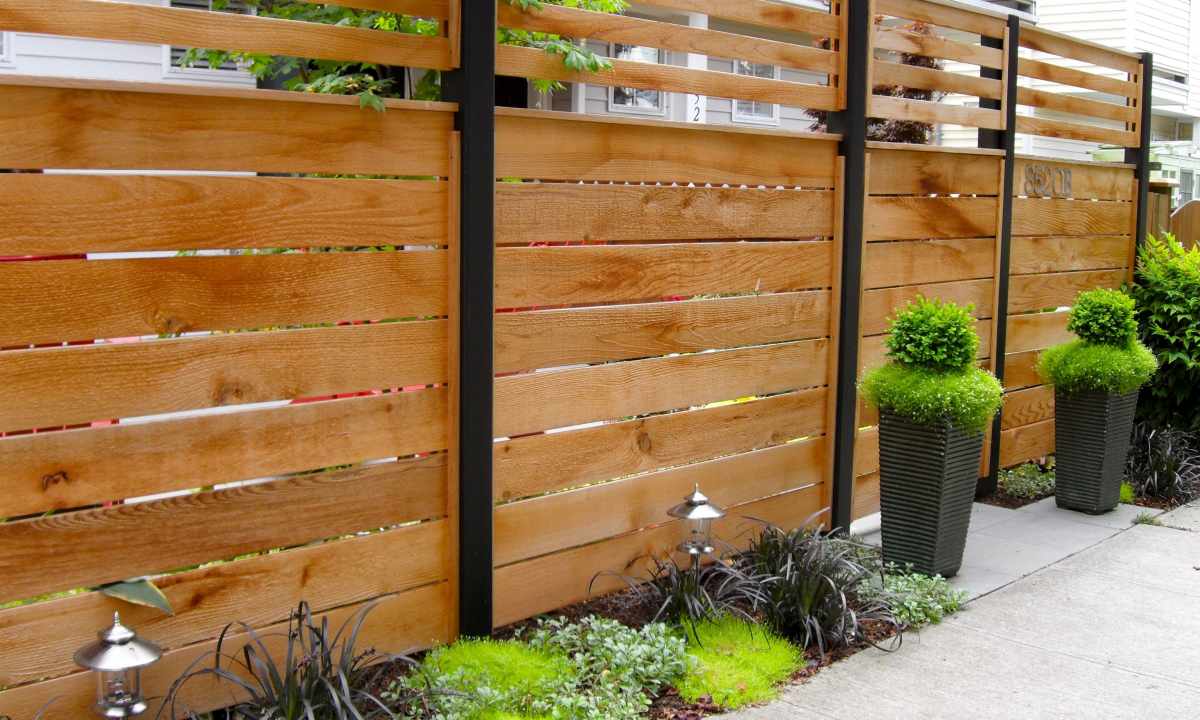The seasonal dacha is seldom used for year-round accommodation. It is possible to save possession from public eyes and vagrant animals and without making investments in solid fence. The design made by the hands of inexpensive materials will be the most available option of protection. If to try to minimize expenses, the wattled fence from branches will be the most favorable decision.
It is required to you
- Willow rods, secateurs, knife, wooden stakes or metal rods, fine wire, thick mittens
Instruction
1. For such fencing willow rods are considered as the best raw materials. It is necessary to prepare them in the spring or in the fall, during the period from October to March, avoiding days with the subzero temperature of air. To define whether rods are suitable for weaving, it is possible having cut off long branch from young bush of willow and having considered its core: if it friable also has red-brown color, it is impossible to use it, it will break in the course of weaving.
2. Branches cut off sharply ground knife or secateurs and stack on storage in any not heated room if is not going to begin work at once. Before weaving of fence they are retted in water for return of flexibility. Diameter of branches of 2-3 cm in size will be good raw materials for thorough fencing if the aim to put up purely decorative fence is pursued, will be thickness in 1-2 cm enough. Rods should be chosen the most equal that work with them was convenient.
3. Before weaving of cloth of fence do installation of support. Their role is carried out by the wooden stakes or metal rods hammered into the earth at distance of 40 cm. You should not choose for them the material having large diameter, it will complicate weaving process. Optimum diameter for stakes should not exceed 5 cm. Previously having driven in the earth short scraps of plastic pipes in installation sites of stakes these can protect their lower part from rotting reliably.
4. Height of support has to be 15-20 cm higher than the planned height of the finished fence. Tops temporarily fasten among themselves with long levels to provide flatness of design during operating time. When the fence is ready, levels are removed, the exception can be made for places with frequent and strong winds. In this case availability of additional strengthening will protect fencing from destruction.
5. Process of weaving is begun from below, getting willow rods in turn from different sides of the established support. One end of rod is attached to support with which work begins, and the second is fixed to the last peg. All branches are in such a way stretched, the required height will not be reached yet. Surplus of long rods cuts off secateurs, and short extends, seeking not to allow in cloth of fence of slots.
6. Processing of ready fence colourless anti-septic tank considerably will prolong its term of operation. Preliminary impregnation of willow rods mordant or their coloring will give to fencing original and live form. Too it is possible to save on it, using instead of expensive purchased means what will be near at hand - potassium permanganate or copper vitriol will paint willow in different shades of brown color.

